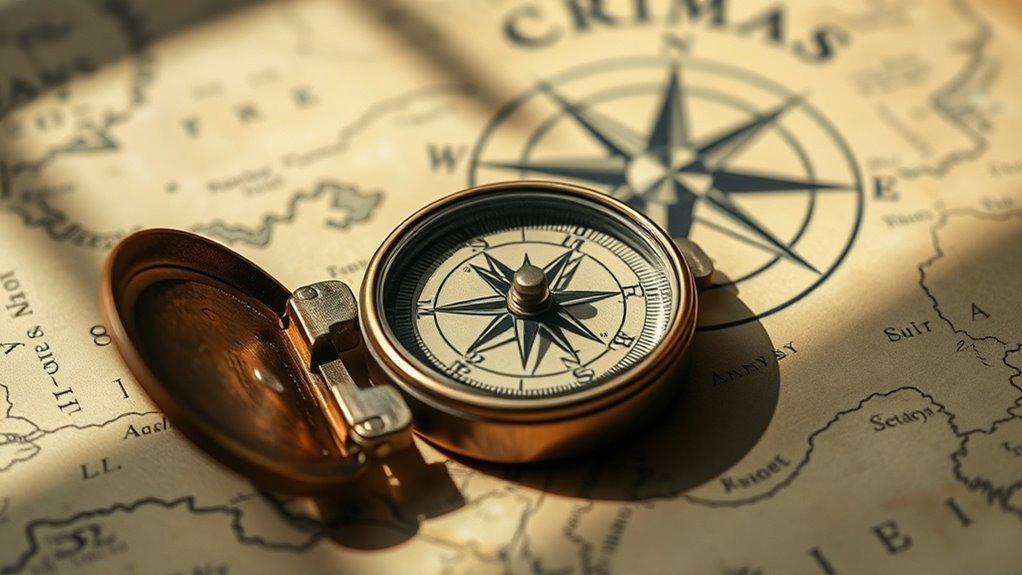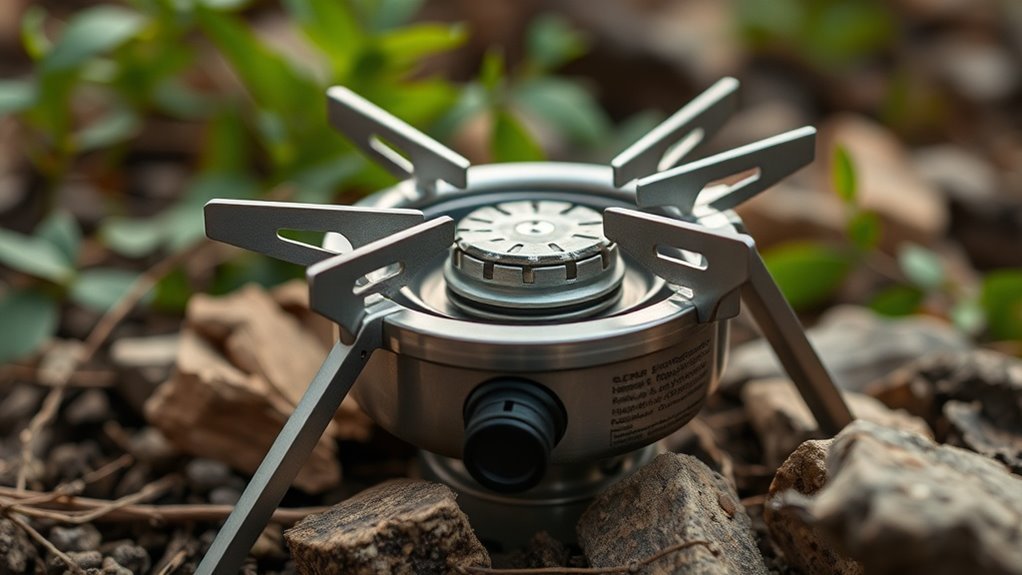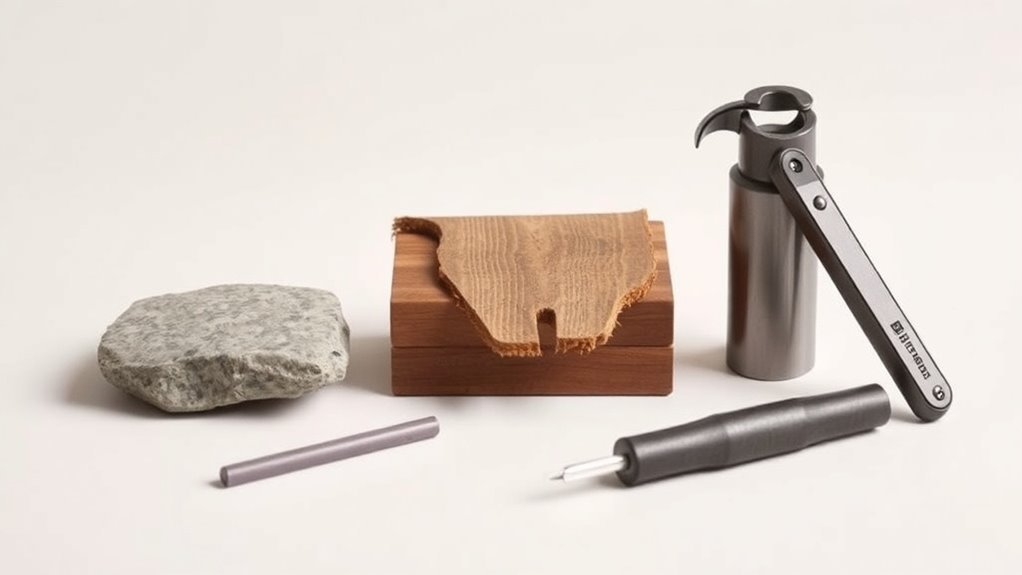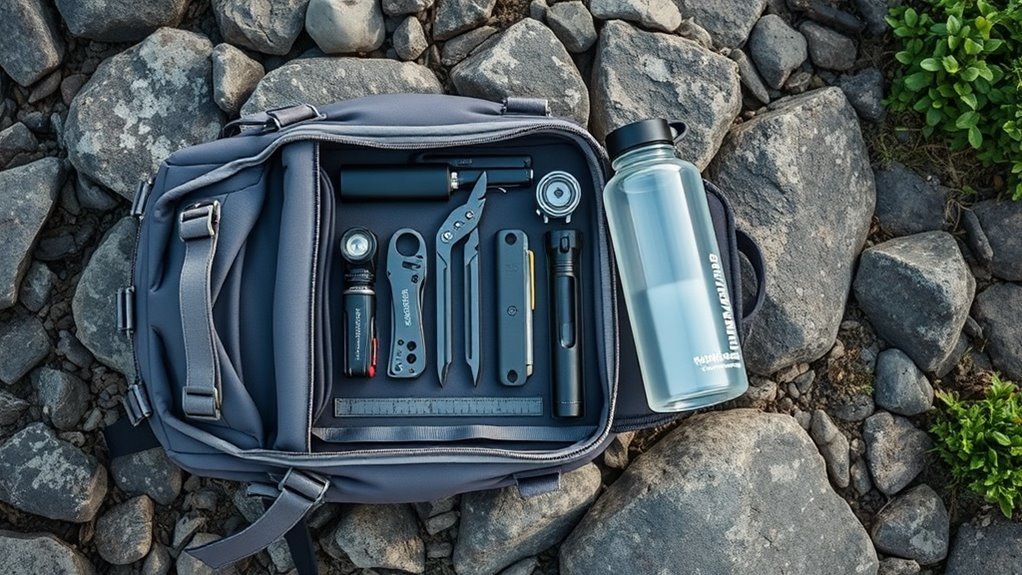Navigation Tools: Compass Basics Explained

A compass is an essential directional tool, designed to help you find your way outdoors. It features a magnetic needle that aligns with Earth’s magnetic field, pointing toward magnetic north. Understanding its components, how it works, and the different types available can enhance your orientation skills. You should also learn to read the compass correctly and apply practical tips for outdoor use. Stick around to uncover more tips and techniques for navigating confidently!
Key Takeaways
- A compass uses a magnetic needle aligned with Earth’s magnetic field to indicate magnetic north for navigation.
- Basic compass components include a magnetic needle, pivot, housing, rotating bezel, and base plate for accurate readings.
- Magnetic north differs from true north; always adjust for declination to ensure precise navigation.
- Holding a compass flat and steady is essential for obtaining accurate bearings when determining your course.
- Understanding and practicing basic skills, like triangulation and bearing maintenance, enhances outdoor navigation confidence and safety.
Understanding the Components of a Compass
A compass is a simple yet essential tool for navigation. To understand how it works, you need to know its key components.
First, there’s the magnetic needle, which always points toward magnetic north. This needle is mounted on a pivot for smooth movement.
The compass housing, usually circular, contains the needle and is often filled with liquid to stabilize it. You’ll also see a rotating bezel marked with degrees; this helps you take accurate bearings.
Additionally, the base plate usually features a sighting mirror or notch to assist in aligning with landmarks.
Familiarizing yourself with these components will make using a compass easier and more effective on your adventures. Get to know each part, and you’ll navigate with confidence.
How a Compass Works: The Science Behind It

Understanding how a compass works can greatly enhance your navigation skills.
At the heart of a compass is a magnetic needle, which aligns itself with the Earth’s magnetic field. The Earth acts like a giant magnet, with magnetic poles that draw the needle toward them. When you hold the compass level, the needle swings freely, pointing toward the magnetic north. This allows you to establish your bearing.
Most compasses have a rotating bezel, helping you set and follow specific directions. The key is knowing that magnetic north differs slightly from true north, so you’ll need to account for declination in your calculations.
Mastering these concepts will boost your confidence in outdoor navigation.
Types of Compasses: Choosing the Right One for Your Needs
With a solid grasp of how compasses function, you’re ready to explore the different types available. Each type has its own strengths, making it important to choose one that fits your needs.
Understanding compass functionality is essential as you explore various types suited to your specific navigation needs.
Here are a few options to evaluate:
- Magnetic Compass: Ideal for general navigation and outdoor activities.
- Silva Compass: Best for orienteering and hiking, offering precision and features like adjustable declination.
- GPS Compass: Great for tech-savvy users; combines traditional navigation with GPS technology for enhanced accuracy.
- Mariner’s Compass: Perfect for maritime navigation, designed to withstand harsh conditions on the water.
Basic Compass Skills: Reading and Using a Compass
Reading and using a compass is essential for successful navigation in the great outdoors. First, hold your compass flat and steady. Locate the needle’s north point, which always aims toward magnetic north.
Rotate the compass until the needle aligns with the orienting arrow. Next, determine your bearing by reading the degree mark at the index line. This number guides you towards your destination.
To follow the bearing, keep the needle aligned with the orienting arrow as you walk. If you’re off track, adjust your direction to realign the needle. Practicing these basic skills will build your confidence and help you navigate effectively.
Practical Navigation Tips: Enhancing Your Outdoor Experience
Once you’ve mastered the basics of using a compass, you can enhance your outdoor experience with a few practical navigation tips.
Once you master compass basics, elevate your outdoor adventures with essential navigation tips for confident exploration.
These strategies will help guarantee you’re confident and safe while exploring nature.
- Always carry a backup map in case your compass fails or you get lost.
- Practice triangulation by identifying landmarks to confirm your position.
- Understand how to set a declination to account for the difference between magnetic north and true north.
- Regularly check your bearing as you travel to stay on course.
With these tips in hand, you’ll navigate confidently, allowing you to enjoy the beauty of the great outdoors while staying oriented.
Happy adventuring!
Questions
Can a Compass Work in Outer Space?
No, a compass won’t work in outer space. It relies on Earth’s magnetic field, which isn’t present away from the planet. You’d need other navigation methods, like GPS or celestial navigation, for space travel.
How Often Should I Calibrate My Compass?
You should calibrate your compass whenever you notice inconsistent readings, after replacing batteries or components, or when you change locations considerably. Regular checks, ideally before each trip, guarantee your compass remains accurate and reliable.
Are There Any Compass Apps That Work Offline?
Yes, there are compass apps that work offline. While traditional compasses offer reliability, these apps bring modern convenience. With your phone’s GPS and offline features, you won’t get lost, even without a signal.
What Should I Do if My Compass Is Broken?
If your compass is broken, try to find landmarks to guide you. Use the sun’s position or learn to navigate by the stars. Always have a backup navigation method, just in case something goes wrong.
Can Magnetic Fields Interfere With Compass Readings?
Imagine a tree swaying under a strong wind—magnetic fields can indeed sway your compass readings. You’ll find nearby electronics, power lines, or rocks can create confusion, so always be mindful of your surroundings.
Conclusion
In summary, mastering compass basics can really elevate your outdoor adventures. Did you know that about 70% of hikers get lost at some point? By honing your wayfinding skills and understanding how to use a compass, you’ll not only boost your confidence but also enhance your safety in the wild. So, grab a compass, practice regularly, and enjoy exploring nature with the peace of mind that you can always find your way back. Happy navigating!






